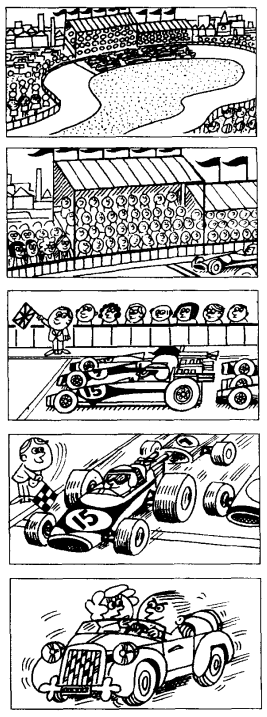one|Lesson 61~70
Lesson 61~62
✨课文

✨单词
have用法②
⚡本课重点
have用法②:常常与表示疼痛和疾病的名词连用。不定冠词a/an与这类名词连用时,分以下几种情况
必须用不定冠词的情况:
a cold、a headache、a sore throate.g. I have a cold.、I have a headache.
不定冠词用或不用都行:
catch (a) cold、have (a) backache/toothache/stomach achee.g. I've had toothache all night.
复数形式的疾病名称前面不用冠词:
measles、mumps、shinglese.g. Most children are in bed with mumps.
被认为不可数的疾病名词前面不用冠词:
flu、gout、hepatitis等e.g. I was in bed with flu for ten days.
the也可以跟flu、measles、mumps等词连用e.g. He's got the flu.
Lesson 63~64
✨课文

✨单词
⚡本课重点
must:参考之前的29~30课
so
作为程度副词时,用于形容词或副词的前面,表示「如此」
e.g. She is so beautiful.
作为转折连词时,表示「因此」
e.g. You have flu so you must stay at home.
because:单词本义为「因为」,它和so之间的关系如下
用了因为就不能用所以,用了所以就不能用因为
e.g. You must stay at home because you have flu. => You have flu so you must stay at home.
wake up:表示「醒来」
get up:表示「起床」
Lesson 65~66
✨课文

✨单词
⚡本课重点
反身代词:关于各人称代词所对应的反身代词,可以参考基础概念中的人称代词
当宾语和主语是同一个人时,一般需要用反身代词
e.g. The old lady is talking to herself.
反身代词也可以和名词连用,表达「就是那个人而不是别人」
e.g. They wanted to finish the work themselves.
dad和mum:它们前面如果没有「所有格代词」或「名词所有格」作修饰的话,就特指自己的父母,此时要大写开头
this、next、every等词开头的时间状语前面通常不加介词
want to do sth.:想要做某事
keep up with sb.:赶上某人
keep on doing sth.:继续保持做某事
cost和pay
- cost:物做主语,表示「某物的售价」
- pay:人做主语,表示「人为某物付钱」
Lesson 67~68
✨课文

✨单词
一般过去时
⚡本课重点
| be的现在时 | be的过去时 | |
|---|---|---|
| 单数 | am/is | was |
| 复数 | are | were |
一般过去时:动作发生的时间是「过去」,动作没有具体的状态(零状态),常常与表示动作完成的时间状语连用。对应中文语境中的 ...了,但要注意,并不是说在翻译成中文时就必须要带有 ...了;同时也不是只有过去时在翻译成中文时才能带 ...了
本节课主要学习的是 主语+was/were+名词/形容词 句式的「主系表结构」一般过去时,这种句式的谓语是助动词be。在之后的71~72课中再学习 主语+V.ed 的「主谓宾结构」一般过去时
主系表结构一般过去时:助动词be表示动作发生的时间
肯定句:表示过去发生的动作、或存在的事实、状态。
主语+was/were+名词/形容词e.g. I was a student.、We were at home in the morning.
否定句:只需在
be的后面加上not即可。主语+was/were+not+名词/形容词e.g. He wasn't a teacher.、They were not at school.
一般疑问句:只需将
be提到句首(主语前面)即可。Was/Were+主语+名词/形容词e.g. Was she hungry?、Were you happy?
特殊疑问句:在一般疑问句的句首加上特殊疑问词并去掉答案。
特殊疑问词+was/were+主语+名词/形容词e.g. He was a teacher. => Was he a teacher? => What was he job?
先把陈述句中的
be动词提到句首得到一般疑问句,再用what对一般疑问句中的答案teacher进行提问,并将what提到句首
一般过去时常见的使用场景有
表示过去某一具体时间发生的动作或存在的事实、状态,常与表示明确的过去时间状语连用,如
a moment ago、yesterday、last night、last year、last night等e.g. Mike was in China last year.
表示过去一段时间内经常性、习惯性的动作,常与
every day、usually、often等时间状语连用叙述没有具体的过去时间的动作或存在的状态
e.g. They were at school.
否定疑问句:谓语部分为否定形式的疑问句。表示说话者惊异的情绪、责难的口吻或赞叹;也可以表示说话者的某种建议、邀请、请求或看法等
这种句式主要是为了加强语气,尽管形式上是否的的,但却表示强有力的肯定
e.g. Aren't you lucky.
Lesson 69~70
✨课文

✨单词
⚡本课重点
excited和exciting:都是由excite变化而来,单词本义为「兴奋、激动」
- 以
-ing结尾的形容词可以修饰「人或物」,表示「某人怎么样」或「某物令人感到...」 - 以
-ed结尾的形容词修饰「人」,表示「某人对...感到怎么样」
介词at、on、in的时间短语
介词
at的时间短语通常表示「确切的时间」e.g. at 10 o'clock、at lunchtime、at noon、at Christmas、at the age of 18
介词
on常用于「周」、「月份中的任意一天」或「一天中的某段时间」e.g. on Monday、on April 1st、on Sunday morning、on your birthday、on Christmas Day
介词
in的时间短语通常表示「某一段时间」e.g. in the evening、in March、in summer、in 1999、in the 20th century